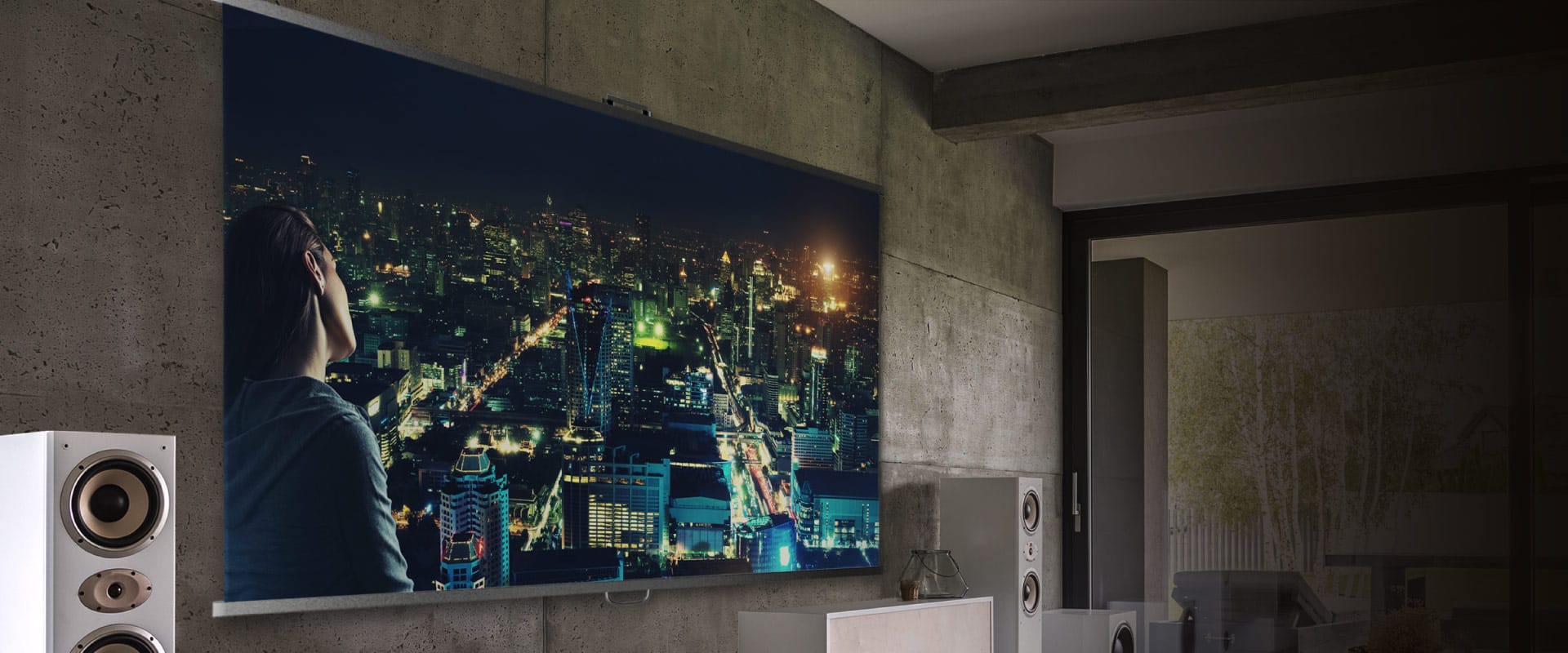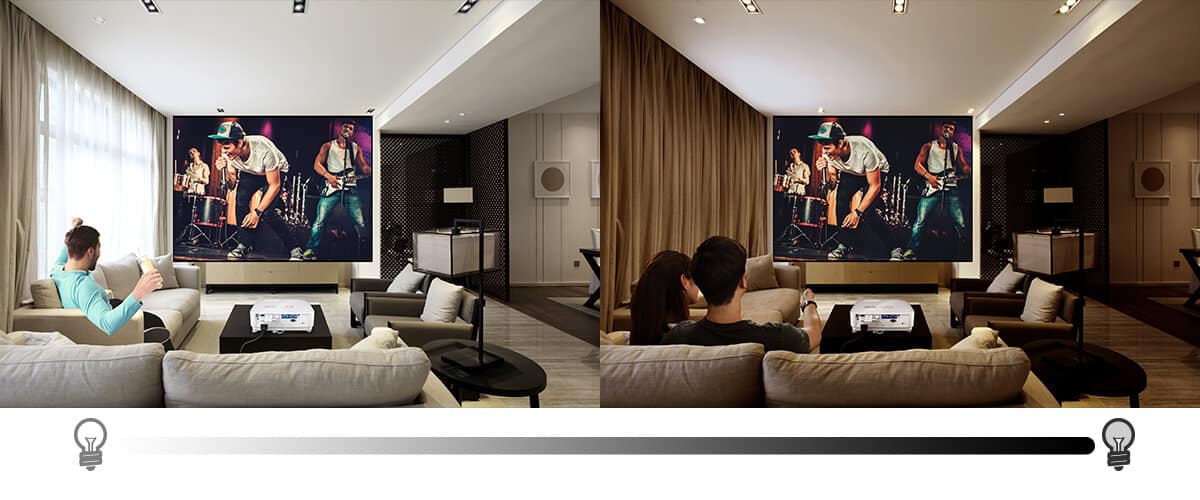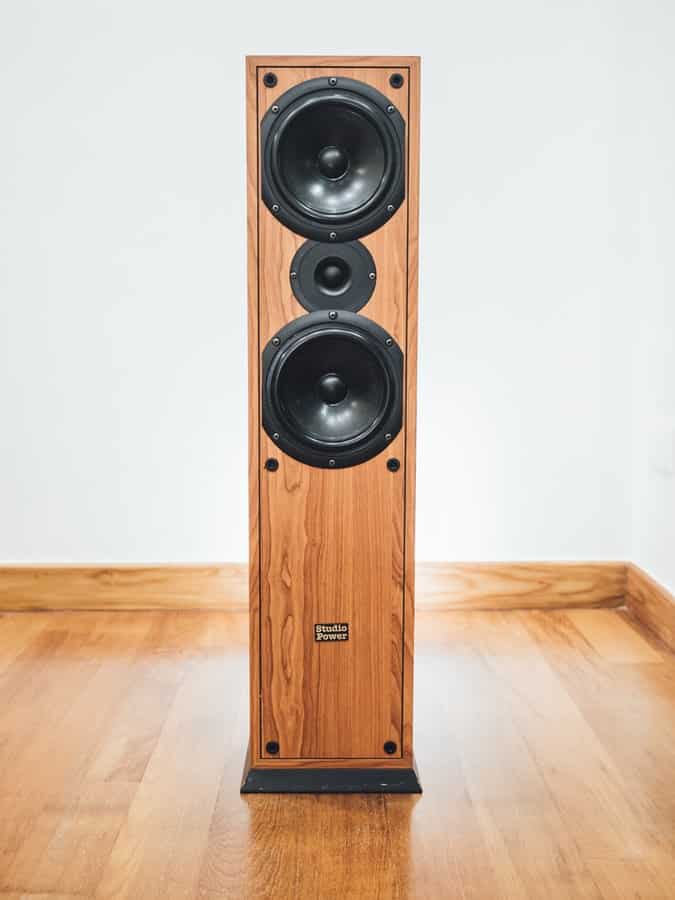From going to movie theaters to streaming movies on laptops, the way we experience cinema has completely changed in the last decade.
As the movie hall gets slowly replaced by small, individualized screens, perhaps, it’s time to bring home the traditional feeling of watching a movie at a cinema hall.
Not just for hitting on nostalgia, but for re-capturing a film in its entirety. Previously, a movie or a song (as a part of it) when watched on a gigantic screen, had our undivided attention.
Today, the screeching sound from a construction site nearby or the constant hum of traffic usually damages the experience while watching a film or binge-watching a TV series. And having a home theater is the best way to preserve what’s lost!
It all depends on hitting the right balance of various equipment, but finding that optimum arrangement is difficult. In this guide, you’ll find some tips to build yourself the perfect home theater.
Read on!
Building the Perfect Home Theater Room

-
Finding a dedicated space
To have a wholesome experience, it’s necessary to find a space that’s relatively isolated from the rest of the house. But bear in mind that the space should be large enough to accommodate all your needs.
Ideally, it should be like a painter’s workspace, which usually doesn’t let people know of its existence. By this, we mean the chosen space shouldn’t intermingle with the daily household affairs.
Usually, a spare bedroom of at least 12 x 12 sq. ft. or an open space right above the living room space serves well as a home theater. The most extravagant arrangement would be making a separate entertainment wing beside the main family room, but that’s a different ball game altogether.
Well, if you’re looking for the ideal size of a home theater, it should be 20 x 13 sq. Ft. This will get you the closest to the feeling of enjoying a film in a movie hall.
Finally, an important point to keep in mind before finalizing a space is checking how much natural light enters there. The ideal space should have the least light coming in, and that will save you the hassle of controlling the ambient light. It’s not only a time-saver but a fund-saver as well.

-
Plan ahead patiently
After selecting the proper space, sit back, and think of the bigger picture. What would we be using the home theater for? Is it primarily for watching films? Or is it for listening to your favorite tracks without disrupting anybody’s sleep?
Or, is it both?
Each question inspires a different plan of action, and it’d have an impact on all aspects, starting from budget to the specifications.
For a dedicated movie theater, a 4K enabled video projector, a surround system, and an internet connection of about 3 Mbps speed is necessary.
For people who’d like to focus only on music, the cost gets considerably cut short, as they need to focus on an audio system. The internet connection doesn’t need to be ultra-fast as audio files do not require much data to buffer.
If what we are looking at is a perfect combination of both, costs will increase, and the video and audio components would demand equal focus. An excellent projector with a pristine sound system, all connected to a top-notch receiver, is the combination you’re looking for.
-
Not buying all things at once
Well, this is the one tip we all must follow when improvisations and technological innovations are the order of the day.
Moreover, deciding on equipment has a catch. It also depends on the size of the chosen room. If the home theater is set up in a spare bedroom that’s less than 15 x 15 sq. ft., a high quality 2.1 speaker could easily suffice for a top-notch experience. But if the room is that of the quintessential home theater size, a 5.1 surround system would be best.
Coming to build the perfect setup, it’s always advisable to go for the can’t-do-without components first, and then buying the cheaper substitutes of everything else.
We believe that the ideal combination to spend your money on are a good display system, a better sound apparatus, and a top-notch receiver. The third component is the most essential element of your home theater system and we advise you to spend most of your money on it.
-
Controlling the ambient light
The real work starts only after you finish deciding on the equipment.
But before reading further, we would like you to close your eyes and think about your favorite movie or the memory of a film you immensely loved watching in a cinema hall. Yes! What we are trying to build here is an experience similar to that.
For achieving this, the primary objective is to control the light. For most home remodeling purposes, we tend to think of ways to increase the amount of natural light, but in this case, we will limit it.

If you are using a large smart TV, unnecessary light falling on the flat screen will make the overall experience dull. Thus, for such a scenario, light-blocking curtains (black curtains are the best) should be placed on every window and door, which can block even the smallest sources of light.
For those choosing a projector, select one that has a highly luminous bulb to make the screen glow brighter, as that’d compensate for the extra light that enters the room. And finally, in our opinion, choosing the basement as the home theater best suits the job as the natural light entering there is already very low.
-
Controlling the ambient sound
Even top-tier sound systems can falter without proper ambient noise control. Addressing this issue can greatly enhance your home theater experience. Here’s how:
- Start with the basics: replace hollow wooden doors with solid ones. While not a complete solution, this is a crucial first step in absorbing unwanted sounds.
- Enhance your room’s walls with a layer of drywall or use sound-reducing wall boards. Both are effective ways to reduce noise interference.
- If you’re still dealing with excess noise, consider incorporating heavy curtains. These can block additional light and sound, making your home theater more comfortable and quiet.
However, if you’re looking to create a fully soundproof room, you may need more comprehensive strategies. For more in-depth techniques and methods, check out our guide on “how to soundproof a room“. This resource will provide you with more advanced techniques to create a quieter, more immersive home theater environment.
-
Building the surround sound system
Now that the main work of cutting the ambient light and sound is complete, all that remains is selecting the perfect audio and video equipment.
Reiterating a point mentioned above, in a small room, surround sound can be created by the simplest of speakers if positioned correctly. On the other hand, if your home theater room is too large, creating an overwhelming surround system is difficult without buying high-end speakers.

While speaker shopping, one factor that bothers even the best of us is getting confused by the specs. Thus, we have simplified it here for you.
- The first spec to look for is the frequency range of the speakers. The higher the range, the better. With higher ranges, the number of sounds that will be picked up by the speakers will be more, adding to the ambiance of the home theater.
- Next comes speaker sensitivity. Sensitivity simply means how much volume can the speakers reproduce in a given power range. This has a significant effect on the amplifiers, woofers, soundbars, and subwoofers that are used alongside the original sound equipment. The higher the sensitivity, the sharper and more booming the sound becomes. Anything more than 90 decibels should work perfectly fine.
- Finally, do NOT confuse watts for loudness. Although both are linked, a low wattage speaker with the perfect setup will be far more efficient than a lavish combination of different sound equipment with very high wattage.
-
A projector or a smart TV?
Well, this is a question people keep on asking, and it’s not that difficult to answer. First, going by your preferences is the best choice. If you are a traditionalist who likes the single, thick streak of light falling from a projector onto a screen, go for it. We understand the authenticity of that feeling.
Whereas there are people who didn’t grow up going to single-screen theaters, smart TVs will suit them the best. Both the setups have their benefits and pitfalls. While a decent projector increases your budget, its output on a blank white screen is something worth spending money on!

Nowadays, 4K-enabled projectors come with very high dynamic ranges, giving a crystal-clear display and extremely vibrant colors.
A smart TV, on the other hand, completely removes the hassle of connections and wires, and all that’s required is a fast internet connection for streaming. Their interfaces are also comprehensive and support all kinds of playback files.
While the projector is an extremely portable option, the smart TV caters to the overall budget of your home theater and also ensures better connectivity. However, wifi-enabled projectors are also available nowadays.
-
Selecting a receiver, a challenging task
The most important aspect of the home theater is the receiver. A setup having high-quality equipment and a weak receiver, is going to perform poorly. So, if you got money to splurge somewhere, do it on the receiver.
A receiver is like the motherboard of a computer and even more than that. While it is the central connecting system of all the different devices, a good receiver can get the best out of all the equipment.
Wi-fi and Bluetooth-enabled receivers nullify the problem of wiring, but that’s not a dealbreaker. Instead, with tools such as Chromecast, these wireless features can be added later. The idea behind buying a receiver should be making it future proof so that it can accommodate all modifications that you’d make in the coming times. Thus, things to look for in a receiver are:
- Number of channels. With the number of channels, the total number of speakers you can connect with the receiver increases.
- Broad range of connectivity. The receiver should be able to play all media, starting from spinning vinyl records to the latest 4K video output channels. Ideally, one should list all the media sources they would be connecting to the receiver and then decide on the device.
- HDR formats. With video formats getting better every day, the best way to futureproof your receiver is checking whether it’s compatible with HDR10, DV, and HLG formats. You don’t need to understand them in detail, just checking the specs should do.
- Multi-room connectivity. Although this is a long shot, consider this option if you plan to have one receiver that can operate many devices across rooms. Multi-room AVRs can play a 4K video in one room while streaming a Netflix show on TV, in another.
-
Getting the seats right, it’s more than just tech!
Since we’re talking about a “home” theater, comfort is one of the aspects you must look after.
Try having a wide assortment of seats, starting from bean bags, recliners, full back lounge chairs to ordinary cushioned and wooden chairs. Dispersing and keeping them randomly throughout the room allows the space to breathe.

Keep in mind that your home theater must look like a cheerful space of leisure and light-hearted enjoyment and not an old timer movie theater strictly reserved for intellectuals.
But if you prefer it that way, be our guest and choose from the many traditional theater-style seats!
Final words
Finally, you might also consider installing light sources inside to revel in the feeling of sitting in an actual movie theater. From dim yellow lights, soffits, dimmers, or rope lights, the options are vast and varied. Our personal preference is lining the ceiling with soffits, as they suit all kinds of cinematic ambiances.
The last word we’d like to have is regarding tuning. Fine Tuning the entire setup is as important as having the right equipment. The idea is to get the best of all the gears as a weak link can bring down the entire system’s performance.
Similarly, carefully upgrading one aspect of the entire setup could level up the overall performance of the home theater.
So, choose carefully. The devil is always in the details. Good luck!


